Hewlett Packard Enterprise transforms into hybrid IT-as-a-Service provider with Okta

weeks to first demo
days to deployment
customers
See More from HPE - Hewlett Packard Enterprise :
Company News Company News Oktane21 Oktane20 Keynote Oktane20 Technical Case Study Infographic- Major digital reinvention
- Delivering Cloud Experience on-prem
- An identity solution for a complex customer environment
- Partnering with a leader in cloud-based identity management
- Fast deployment, frictionless user experience
Hewlett Packard Enterprise (HPE), born in 2015 out of the dissolution of Hewlett-Packard, is leaving its traditional IT infrastructure roots behind. Once a leader in the world of data centers and networks, HPE has transformed into the global edge-to-cloud platform-as-a-service company that helps organizations accelerate outcomes by unlocking value from all of their data, everywhere. It has pledged to deliver its entire portfolio as-a-Service by 2022.
HPE’s consumption services are offered under the HPE GreenLake brand. And at the heart of the HPE GreenLake experience is HPE GreenLake Central, a platform that provides customers with a consistent cloud experience for all their applications and data, through an online operations console that runs, manages and optimizes their entire hybrid cloud estate.
In creating a global platform to drive all hybrid IT services, HPE GreenLake also created an identity challenge. Customers needed to access their services easily and efficiently—and HPE needed to ensure they could do so securely and seamlessly. That required integrating multiple identities and accesses, while meeting compliance standards.
HPE turned to the marketplace for a solution that was best of breed, cloud-based, scalable, flexible, and could seamlessly integrate multiple identities and organizations. Okta met every requirement.
HPE deployed Okta in just 60 days—a full month ahead of their goal—with the help of Okta’s Customer First team. With the Okta Identity Cloud, HPE GreenLake is helping more customers manage their hybrid IT environments, while keeping its own digital transformation on track.
Using the cloud to revolutionize hybrid IT environments
HPE GreenLake Central provides customers with a consistent cloud experience for all their applications and data. HPE needed to ensure customers could securely and seamlessly access the platform. Rather than building an identity system in-house, HPE partnered with Okta for its customer identity solution, successfully deploying in 60 days.

We were looking for a partner that’s a player in the space; that can keep up to the latest security and identity standards and basically be at the cutting edge. It was easy for us to gravitate to Okta.
Satish Iyer, Vice-President of Products for HPE GreenLake
From hardware company to innovative digital service provider
Hewlett Packard Enterprise (HPE) is in the midst of a major reinvention: by 2022 the company, once known for hardware and infrastructure-based products, will have cloud versions of all its offerings.
“HPE’s major focus is hybrid IT and edge networking,” says Satish Iyer, Vice President of Product, HPE GreenLake Hybrid Cloud. “And we’re committed to delivering our entire edge-to-cloud portfolio as a Service in that time frame.”
In 2015, global IT giant Hewlett-Packard split into HPE and HP Inc. HPE has grown substantially since then, currently counting some 60,000 employees and 11,000 customers. HPE GreenLake is HPE’s offering specifically for consumption services and provides a broad range of flexible technology choices, all delivered as services under a pay-per-use model.
“My team’s focus is primarily around helping our customers transition into the hybrid cloud environment,” Iyer says. “How do we bring a cloud experience to our customers on prem, whether through their own data centers or in a co-location environment?”
“From our roots as a traditional IT infrastructure company, we’re very strong in data centers and networking,” he continues. “Now we’re looking at new ways for customers to consume these traditional infrastructures—different ways by which we can actually help our customers in terms of their on prem journey, as well as drive their use of the public cloud.”
Complex customer needs, one central console
Iyer and his team help their customers access the benefits of optimized infrastructure without the complexity of maintaining it, while also enjoying the scalability, visibility, and accessibility of the cloud.
“More customers want the cloud experience, but either public cloud is not an option or they prefer a private cloud or they like their data center to be in their control, for reasons of data privacy protection or latency,” Iyer explains.
“No matter the business reason, they want the right kind of infrastructure, they want it to be fully managed and they want to be able to do this on prem,” Iyer says. “HPE GreenLake is an innovative way to transform our customers’ IT experience by offering IT-as-a-Service—and solve their hybrid cloud problems.”
And at the heart of the HPE GreenLake experience is HPE GreenLake Central, a platform that provides customers with a consistent cloud experience for all their applications and data, through an online operations console that runs, manages and optimizes their entire hybrid cloud estate.
“Customers access the console for visibility and information about all of their services. They'll be able to self-service, they'll be able to try and buy, and they'll be able to see statistics on usages,” says Iyer. “They'll also be able to get metering information and billing information—we’re giving customers a cloud-like experience, which is not very normal for a classic infrastructure player.”
Hybrid IT services present an identity challenge
Iyer and his team quickly realized that their ground-breaking platform required a robust identity solution to ensure customers can access the diversity of services securely and easily, from anywhere.
“If I look at the scope of what we do within GreenLake and the hybrid cloud, we actually have four different constituents of identity,” says Iyer. These include HPE software and services, third-party SaaS services, cloud providers (such as AWS, Azure, or Google), and the customer’s internal corporate services. Integrating all of these identities was a complex and crucial challenge.
“We’re trying to be that global asset service platform that drives all the services,” says Iyer. “Being able to map out and make sure that our identities and accesses are controlled and privileged is very, very important.”
“Trust is obviously a very important thing in HPE—from a customer, partner, and an internal employee perspective. Identity is the backbone of what we’re offering.”
“It’s important for us to focus on our goals: to build a hybrid cloud service, and offer a very secure service, to our customers,” Iyer says. “To best do that, we have to go with somebody who is best of breed, leading in this industry, and who is going to keep up in this area. Not try to re-invent something that’s been done before.”
Looking for a cutting-edge identity management partner
Having made the decision to buy, an identity solution, Iyer and his team looked to the marketplace. The right product had to be optimized to work for and in the cloud, in alignment with HPE’s SaaS transformation. It would have to be able to integrate a multitude of services and identities, and offer leading edge security.
“We were looking for a partner that’s a player in the space; that can keep up to the latest security and identity standards and basically be at the cutting edge,” Iyer says. He and his team wanted a solution that would facilitate scalability and multi-tenancy—software architecture in which one instance of software serves multiple users or groups of users.
“We need the right identity structure to be able to scale, and the right automation tool set so that we can actually scale,” he continues. “An application may have a hundred users in the public cloud, and tomorrow it may have 10,000.”
“A user might be running workload-specific infrastructure or a learning application on-prem on their machine learning operations, and tomorrow they may have a workload which may be Phi X. So suddenly there may be more users or there may be importing more users into the system. Our identity solution had to be flexible enough for our complex, changing environment.”
Iyer and his team evaluated a number of professional vendors. “I would say it was pretty easy for us to gravitate to Okta,” he says, highlighting Okta ThreatInsight as well as Okta’s suite of ready-to-go integrations as crucial to GreenLake’s final decision. ThreatInsight enhances security by ensuring only people from certain networks can log in—preventing both malicious account takeovers and incorrect account lockouts.
Aggressive deployment timelines? No problem
HPE, and particularly the HPE GreenLake team within HPE, had to move quickly. The hybrid and cloud industries are competitive and constantly innovating. Iyer and his team set an aggressive timeline: they wanted to deploy Okta within three months.
“We have to show progress pretty fast,” Iyer says. “We wanted to bootstrap everything we have and bring existing GreenLake customers into the GreenLake Central environment within one quarter.”
Iyer and his team achieved that goal in just two months. “Each of these customers have different services or different service sets, and no two environments were alike,” says Iyer. “We definitely had the right identity framework to meet everyone’s needs.”
The Okta Integration Network enabled HPE to automatically integrate single page apps, containerized apps, and other requirements. “We host services internally in the data center, we have third party services, and we have services owned by the customers’ business units,” says Iyer. “Okta was able to seamlessly federate and marshal identities across all these entities”
HPE GreenLake is now using a number of Okta’s Customer Identity products to automate Okta org creation and manage their multi-org deployment. The Okta Identity Cloud enhances security with Multi-Factor Authentication, while also providing seamless access by giving customers the ability to integrate their on-prem directories
Additionally, Okta’s B2B Integration enables HPE to give its enterprise customers the ability to federate their own identity systems and isolate their own customers into their unique user store.
Iyer engaged Okta’s Customer First team to assist with deployment. The Education Services branch customized a global training effort for product managers and developers; Professional Services helped drive rapid time to go-live. “From Professional Services first involvement to our first demo of GreenLake Central was only 28 days,” says Iyer. “And just 30 days later we were live with customers.”
GreenLake employed Okta’s hub and spoke architecture: GreenLake Central operates as the hub; every new customer it brings on becomes a new spoke that connects to it. This strategy allows HPE GreenLake to set up new customers quickly, giving each its own behind-the-scenes Okta org to manage and integrate identity.
Keeping HPE’s digital transformation on track with Okta
Iyer looks forward to helping more customers optimize their hybrid environment, confident that Okta can manage complex identity requirements while HPE further innovates its core services.
“When customers are truly hybrid, elements like cost and compliance can become problems without the proper management in place,” he says. “Compliance is a huge issue today across both public cloud and on prem—not a single day goes by without a story of some data leak or some bucket open.
“HPE, with the assistance and expertise of Okta, helps customers monitor and manage pay-per-use IT services, while meeting compliance requirements.”
Iyer says HPE’s digital transformation is on track and on the right path, in part thanks to Okta.
“For us, success is having more and more customers adopt HPE GreenLake Central because it gives them the flexibility to run and manage their specific hybrid setup, but still get the benefits they would from a public cloud,” he says. “And Okta is helping us to drive that cloud experience to our customers.”
Perhaps most importantly, Okta offered an identity management solution that was easy and intuitive for all users to navigate. “It has to ‘just work,’” says Iyer. “And with Okta, it does. Users can just log in with their credentials, which give them the right access to the right services, and that's it, we're done. They don’t need to know all of the things going on in the backend.
“If we can get there (and I think we are getting there), it’s the seamless, frictionless experience you can expect.

